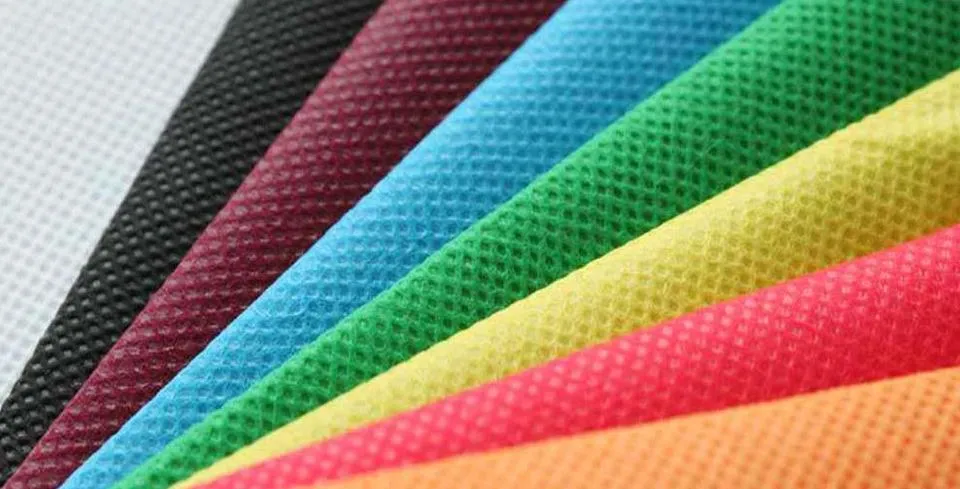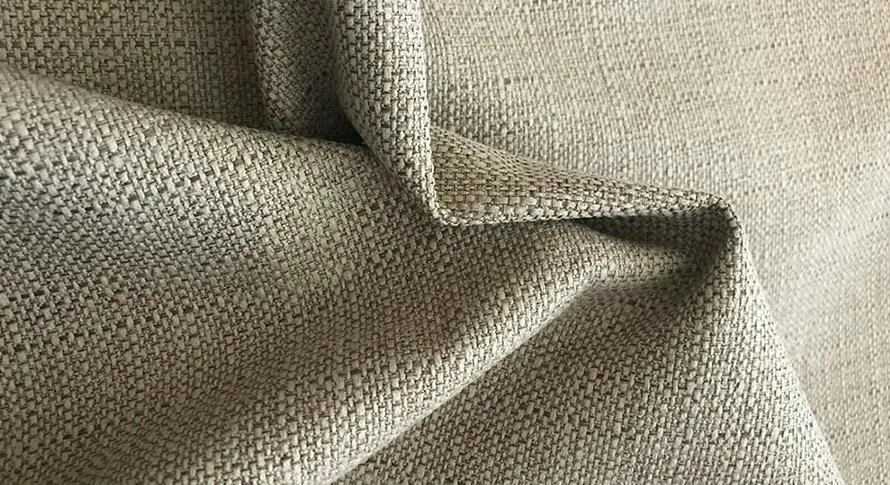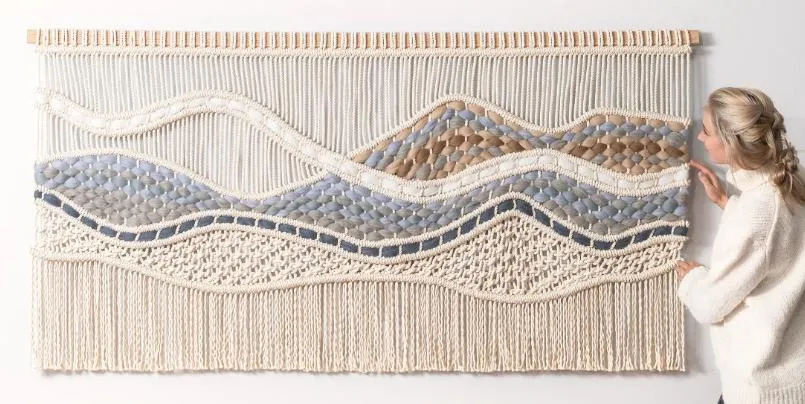I worked with fabrics in many settings – medical, industrial, along consumer products. I noticed a fact – fabrics are not the same. Through my experience, knowledge about woven and non-woven fabrics saves time, money, in addition to problems. In this article, I share my insights about non-woven fabrics, as they have become important in many industries. I also explain when woven fabrics are still useful.
1. Production Methods: Woven vs Non-Woven Fabrics
1.1 Non-Woven Fabrics
Non-woven fabrics bypass the yarn-spinning and weaving stages, making them faster and less resource-intensive to produce. Fibers are bonded together using mechanical, thermal, or chemical methods. Common production techniques include:
- Spunbond: Long synthetic threads (like polypropylene or polyester) are melted, stretched into thin strands, laid into a sheet, and stuck together with heat. This is used for light but strong items like medical masks, surgical gowns, and reusable shopping bags.
- Melt-Blown: Very tiny fibers (1–5 microns) are made by pushing melted plastic through small holes and using hot air to stretch them. Melt-blown fabrics are important for filtering, such as in N95 masks and air filters.
- Needle-Punched: Fibers are tangled together using barbed needles to make thick, felt-like materials. These are used for things like ground covers, insulation, or car carpets.
- Air-Laid and Wet-Laid: Fibers are spread in air or water, then stuck together to make soft, absorbent products like wipes, paper, or hygiene items.
- Stitch-Bonded: Fibers or sheets are sewn together for extra strength. This is used in furniture backing or mattress liners.
Production Speed:
Non-woven production is significantly faster, ranging from 100 to 400 yards per minute, with advanced lines for medical products reaching up to 500 meters per minute. This high throughput reduces labor and energy costs.
Case Study:
During the COVID-19 pandemic (2020–2022), global demand for surgical masks and N95 respirators surged by over 500%. Non-woven manufacturers scaled up spunbond-melt-blown-spunbond (SMS) production lines to produce multilayer non-woven fabrics for masks. For instance, a single SMS line could produce 1 million mask-equivalent square meters per day, meeting urgent healthcare needs.
1.2 Woven Fabrics
Woven fabrics are created by interlacing two sets of yarns—warp (longitudinal) and weft (transverse)—at right angles on a loom. This traditional method involves several meticulous steps:
- Fiber Spinning:
Natural fibers (e.g., cotton, wool, linen, hemp) are cleaned, carded, and spun into yarns. Synthetic fibers (e.g., polyester, nylon, polypropylene) are extruded from molten polymers and drawn into filaments. - Yarn Preparation:
Yarns undergo winding (to remove imperfections), warping (aligning warp yarns), and sizing (coating yarns with starch or polymers to enhance strength and reduce friction during weaving). - Weaving:
Specialized looms, such as shuttle looms, rapier looms, or air-jet looms, interlace the warp and weft yarns to form patterns like plain weave, twill, or satin. The choice of weave affects the fabric’s texture, strength, and appearance. - Finishing:
Fabrics are washed, dyed, printed, or coated to achieve desired properties, such as water resistance or flame retardancy.
Production Speed:
Woven fabric production is relatively slow, ranging from 0.5 to 6 yards per minute, depending on the loom type, weave complexity, and material. For example, intricate jacquard weaves for upholstery may take longer than simple plain weaves for cotton shirts.
Example:
Industrial cotton duck canvas, used for heavy-duty tents or outdoor gear, is woven on high-tension looms to ensure exceptional durability and minimal stretch under stress. A single yard of 10-ounce cotton duck canvas requires precise interlacing to achieve a tensile strength of 400–600 N (Newtons).
2. Cost, Efficiency, and Environmental Impact: Woven vs Non-Woven Fabrics
2.1 Cost and Production Efficiency
Non-woven fabrics usually cost 50–60% less to make than woven fabrics because their production is simpler. Main reasons include:
No Yarn Preparation: Non-wovens skip spinning and weaving, which saves labor and materials.
High-Speed Production: Spunbond and melt-blown lines run 10–100 times faster than weaving machines, using less energy.
Minimal Waste: Non-woven processes waste 10–20% less material because there’s no broken yarn or edge trimming.
2.2 Lightweight and Disposable
Non-woven fabrics are light but strong, making them great for disposable or one-time-use items:
Medical Products:
Surgical masks, gowns, drapes, and wound dressings (e.g., polypropylene spunbond gowns weigh 16–25 g/m², offering breathability and fluid resistance).
Hygiene Products:
Baby diapers, sanitary pads, and adult incontinence products rely on air-laid non-wovens for absorbency and softness.
Packaging: Light non-woven wraps and reusable shopping bags are cheaper alternatives to plastic films.
2.3 Environmental Impact
Both fabric types affect the environment, but non-wovens have improved in sustainability:
Biodegradable Options:
Non-wovens made from polylactic acid (PLA), cellulose, or bamboo fibers decompose naturally, reducing landfill waste.
Recyclable Materials: Recycled polypropylene (BOPP) and PET are used in packaging and reusable bags.
Energy Efficiency: Non-woven production uses 30–40% less energy and water than weaving, especially for spunbond and melt-blown fabrics.
Innovative Products:
Companies like Innovatec produce water-soluble non-wovens (e.g., InnovaWipe) for flushable wipes, minimizing environmental impact.
3. Advantages of Woven Fabrics
3.1 Durability and Longevity of Woven Fabrics
The crisscrossed yarn structure of woven fabrics gives them great strength and long life:
Lifespan: High-quality woven fabrics can last 10–30 years if cared for well. For example, wool upholstery lasts 15–20 years, and PVC-coated woven coverings (like ExxoTec™) can last 20–30 years outdoors.
Abrasion Resistance: Woven fabrics such as Cordura nylon can withstand 30,000–50,000 rubs in the Martindale test, making them perfect for heavy use.
Shape Retention: Tight weaves (like twill or satin) resist stretching and keep their shape over time.
3.2 Aesthetic Appeal of Woven Fabrics
Woven fabrics are flexible in look, feel, and design:
Plain Weave:
Smooth and uniform, used in cotton shirts and bed linens.
Twill Weave:
Diagonal patterns for durability, seen in denim and chinos.
Satin/Sateen: Shiny, soft finish, used in dresses and bedding.
Jacquard/Damask: Detailed patterns for furniture covers and curtains.
3.3 Mechanical Performance of Woven Fabrics
Woven fabrics are strong and stable for many uses:
Tensile Strength: Cotton/polyester mixes can handle 400–600 N, good for industrial tarps and sails.
Seam Strength: Woven fabrics stay strong at seams, ideal for protective clothing and car seats.
Impact Resistance: 3D woven fabrics, used in airplanes and defense, give high strength without much weight.
Standards: Woven fabrics for industry often meet ASTM D5034 (tensile strength) and ASTM D3884 (abrasion resistance), making sure they perform well in tough conditions.
4. Advantages of Non-Woven Fabrics
4.1 Cost-Effectiveness of Non-Woven Fabrics
Non-woven fabrics are 50–60% cheaper than woven fabrics due to lower production costs and faster manufacturing. This makes them ideal for high-volume, disposable products like masks, wipes, and packaging.
4.2 Versatility and Customization of Non-Woven Fabrics
Non-woven fabrics can be engineered for specific properties:
Hydrophobicity/Hydrophilicity:
Spunbond non-woven fabrics can repel water (e.g., for packaging) or absorb it (e.g., for wipes).
Filtration Efficiency:
Melt-blown non-wovens achieve 99% filtration for particles in air and liquid filters.
Additives:
Antibacterial agents, flame retardants, or UV stabilizers can be incorporated during production.
4.3 Lightweight and Disposable Non-Woven Fabrics
Non-woven fabrics are lightweight (e.g., 10–50 g/m² for medical gowns) and often designed for single-use, reducing cleaning and maintenance costs in healthcare and hygiene settings.
5. Applications of Non-Woven Fabrics
5.1 Medical and Hygiene
Non-woven fabrics are important in healthcare and personal care:
Surgical Products: Disposable masks, isolation gowns, surgical gowns,medical coveralls,drapes, and disposable caps.
Hygiene Products:
Diapers, sanitary pads, and incontinence products use air-laid non-wovens for absorbency and comfort.
Wound Care:
Non-woven dressings (e.g., hydrocolloid pads) promote healing while preventing adhesion to wounds.
5.2 Industrial Applications
Non-wovens are widely used in technical applications:
Filtration:
Automotive oil filters, HVAC systems, and vacuum bags rely on melt-blown and spunbond non-wovens.
Geotextiles:
Needle-punched non-woven fabrics provide separation, drainage, and reinforcement in road construction and erosion control.
Packaging:
Non-woven wraps and bags offer lightweight, tear-resistant alternatives to plastic.
5.3 Everyday Consumer Products
Non-wovens are ubiquitous in household and commercial goods:
Reusable Shopping Bags:
Spunbond polypropylene bags are lightweight and recyclable.
Cleaning Wipes:
Air-laid non-wovens offer high absorbency for household and industrial cleaning.
Furniture Liners:
Non-woven mattress and pillow liners provide breathability and dust protection.
6. Applications of Woven Fabrics
6.1 Apparel
Woven fabrics are the backbone of the clothing industry:
Casual Wear:
Cotton shirts, denim jeans, and chinos offer comfort and durability.
Formal Wear:
Wool suits and silk dresses provide elegance and shape retention.
Outdoor Gear:
Nylon and polyester weaves are used in jackets and backpacks for weather resistance.
6.2 Home Textiles
Woven fabrics enhance home décor with durability and style:
Upholstery:
Wool, cotton, and polyester blends resist wear in sofas and chairs.
Bedding:
Cotton sateen sheets offer a smooth, luxurious feel.
Curtains:
Jacquard weaves create intricate patterns for aesthetic appeal.
6.3 Technical and Industrial Uses
Woven fabrics are critical in high-performance applications:
Outdoor Equipment:
Tents, sails, and tarps use PVC-coated polyester for weather resistance.
Automotive:
Woven upholstery and seat belts meet ISO 3795 (flammability) standards.
Aerospace and Defense:
3D woven composites provide impact resistance for aircraft components.
7. Choosing Between Woven and Non-Woven Fabrics
The table below summarizes key factors:
| Factor | Woven Fabrics | Non-Woven Fabrics |
|---|---|---|
| Lifespan | 2–20 years | 1–3 months (disposables) |
| Production Speed | Slow (0.5–6 yards/min) | Fast (100–400 yards/min) |
| Durability | High (30,000+ double rubs) | Low to Moderate |
| Customization | Weave patterns, textures | Fiber bonding, additives |
| Cost | Higher (50–60% more than non-wovens) | Lower |
| Typical Uses | Clothing, tents, upholstery, reusable bags | Masks, diapers, wipes, filters |
| Environmental Impact | High water/energy use; reusable | Lower resource use; biodegradable options |
Decision Tips:
- Reusable or Heavy-Duty Items:
Choose woven fabrics for longevity (e.g., woven polypropylene bags last 100+ uses vs. 5–10 uses for non-woven versions). - Disposable or Cost-Sensitive Items:
Opt for non-wovens for single-use or budget-conscious applications (e.g., surgical masks or wipes). - Sustainability:
Prioritize biodegradable non-wovens or sustainably sourced woven fabrics (e.g., organic cotton or recycled PET). - Performance Needs:
Evaluate tensile strength, filtration, or aesthetic requirements based on standards like ASTM or ANSI/AAMI.
Example:
For a reusable tote bag, a woven polypropylene fabric with a tensile strength of 500 N ensures durability for heavy loads, while a non-woven version suits lightweight, promotional bags.
8. Eco-Friendly Non-Woven Fabric Innovations
Sustainability is reshaping the non-woven industry, with innovations addressing environmental concerns:
Piñatex:
Made from pineapple leaf fibers, this biodegradable non-woven is used in fashion (e.g., bags, shoes) and packaging, reducing agricultural waste.
Seawool®:
Combines oyster shells and recycled PET for antibacterial, odor-resistant non-wovens, ideal for apparel and upholstery.
Water-Soluble Non-Wovens:
Products like Innovatec InnovaWipe dissolve in water, offering flushable wipes that minimize landfill waste.
Bio-Based Polyester:
Compostable non-wovens reduce microplastic pollution, with applications in hygiene and agriculture.
Recycled Non-Wovens:
BOPP and PET-based non-wovens use post-consumer plastics, supporting circular economies.
Market Growth:
Recycled Textiles:
Expected to grow at a 3.6% CAGR from 2025 to 2033.
Rainproof Non-Wovens:
Projected 4% growth in 2025, driven by outdoor and packaging applications.
Mesh Non-Wovens:
Anticipated 6% growth in 2025, used in filtration and agriculture.
Case Study:
Freudenberg Performance Materials launched a 100% biodegradable spunbond non-woven in 2024, made from PLA, reducing CO₂ emissions by 30% compared to traditional polypropylene non-wovens.
9. Market Trends and Insights: Woven and Non-Woven Fabrics
9.1 Non-Woven Fabrics
The non-woven market is driven by:
- Hygiene and Medical:
Demand for diapers, sanitary pads, and medical disposables is fueled by aging populations and healthcare advancements. - Filtration and Packaging:
Growth in automotive, HVAC, and eco-friendly packaging drives non-woven adoption. - Sustainability:
Consumer preference for biodegradable and recycled materials is reshaping production.
Data:
North America consumed 233,300 metric tons of medical non-wovens in 2024, valued at USD 636.6 million. The elder care segment, driven by 50%+ of patients aged 65+ experiencing incontinence, boosts demand for absorbent non-wovens.
9.2 Woven Fabrics
Woven fabrics thrive in premium and technical markets:
Apparel and Home Décor:
Luxury and sustainable textiles (e.g., organic cotton, hemp) cater to eco-conscious consumers.
Technical Applications:
3D woven fabrics and high-performance weaves meet aerospace, automotive, and defense needs
Conclusion
Both woven and non-woven fabrics are important in our daily lives and industries. Woven fabrics provide durability, strength, and long-lasting use. Non-woven fabrics offer cost efficiency, barrier protection, and flexibility. The choice between them depends on their intended use, cost, and environmental goals. With new technologies and eco-friendly materials, both types will continue to change, making them essential in fashion, healthcare, and industrial markets in the future.If you need customized non-woven fabrics or non-woven products, feel free to contact us.




